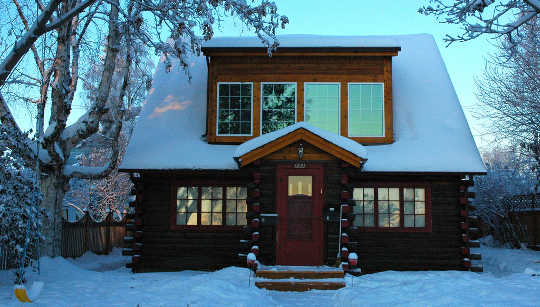
People typically switch their central heating on in October and use it daily until March or April. Heating homes accounts for over 70% of household energy consumption. So reducing this figure – while keeping homes warm enough – not only cuts energy bills, but helps meet the carbon reduction commitments that the UK government is legally required to deliver.
The most recent figures show that 2.38m households in the UK are in fuel poverty – which basically means that almost 11% of British homes cannot afford to keep warm. But while the scale of this problem is significant, not all the solutions need to be complex and costly. So here are 10 simple tips for keeping your home warm for little or no extra cost – just in time for that severe weather warning.
1. Use your curtains
Heat from the sun is free so make the most of it. Open your curtains and let the sunlight in during the day to make use of this free heat. When it gets dark, shut your curtains, which act as another layer of insulation and keep warmth in your rooms. You should also make sure you don’t have any leaks or gaps so that the warm air can stay in and the cold air stays out – this also helps to reduce condensation.
2. Use timers on your central heating
The Centre for Sustainable Energy advises that programming your boiler to turn the heating on a little earlier – such as 30 minutes before you get up in the morning – but at a lower temperature is cheaper than turning it on just as you need it at a higher temperature. This is because a boiler heats up at a constant speed whether you set your thermostat to 20°C or 30°C. But don’t make the mistake of leaving your heating on low all day – because then you’re just paying for heat when you don’t need it.
3. Move your sofa
It might feel great to have your favourite seat in front of the radiator, but it’s absorbing heat that could be warming your home. By moving it away from the radiator, hot air can circulate freely. The same goes for your curtains or drying clothes – keep them away from the radiator so that you can get the most out of your heat source.
4. Maximise your insulation
When it comes to heat, around 25% is lost through the roof. This can be easily reduced by installing 25cm of insulation throughout your loft. It’s also worth seeing what’s going on in your walls, as around a third of the heat in an uninsulated home is lost this way. Although it’s not as cheap to install as loft insulation, cavity wall insulation could save up to £160 a year in heating bills. It’s also worth checking with your energy supplier to see if they have any insulation schemes running – which can sometimes mean cheap or free installation.
5. Wrap up hot water tank
If you have a hot water tank, make sure it is properly lagged – or insulated. This will keep the water warmer for longer, and reduce heating costs. The Energy Community reckons that insulating an uninsulated water tank could save up to £150 a year – but even just upgrading your tank’s “old jacket” will help to save money.
6. Turn down the dial
This may seem a little counter-intuitive, but bear with me. The World Health Organisation previously recommended a minimum temperature of 21°C in the living room, but Public Health England revised this to 18°C in 2014. And research shows that turning your thermostat down by 1°C could cut your heating bill by up to 10%. So keep the dial at 18°C, save money and avoid the negative impacts of a cold home .
7. Block out the draughts (drafts)
Even a simple solution such as a making your own sausage dog draught excluder will help keep the warmth in your home. The Energy Saving Trust estimates that DIY draught-proofing your doors, windows and cracks in the floor could save £25 per year. You can do this yourself for very little cost. Self-adhesive rubber seals around doors and windows and door draught excluders are relatively cheap and easy to install. So it’s worth getting those doors and windows sealed before winter properly kicks in.
8. Install thermostatic radiator valves
Research at the University of Salford has shown that installing heating controls and theromostatic radiator valves results in energy savings of 40% compared to a house with no controls. These work by allowing you to program your heating to come on at predefined times – so you only use energy when you need it. New smart thermostats can also be controlled remotely via your mobile so you can turn on your heating on the way home, ensuring it’s nice and toasty when you arrive.
9. Upgrade your boiler/furnace
If your boiler is more than 10 years old, it may be time to replace it with a new, more efficient model. Depending on your old boiler type and house, you could save up to £350 with a new A-rated condensing boiler – which uses less energy to produce the same amount of heat. Plus, if it’s new, you’re less likely to have any issues going into the winter season.
10. Reflect the heat
Radiator panels are relatively cheap, easy to install, and ensure that heat from your radiators warms up your room and not your walls. They work by reflecting the heat back into the room.
![]()
About The Author
Robert Marchand, Lecturer in Operations Management, University of Sheffield
This article was originally published on The Conversation. Read the original article.
Related Books:
at InnerSelf Market and Amazon






















